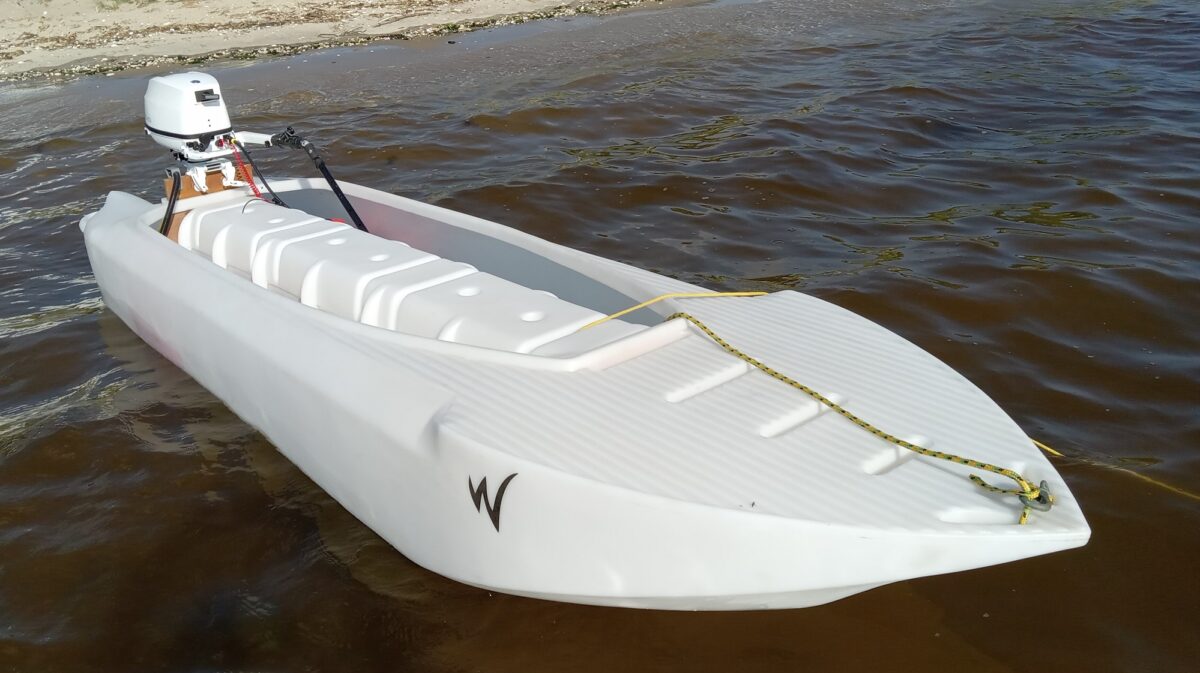Anyone observing the evolution of the common fishing kayak in the past decade has noticed that the high-end tier (not better, just more expensive) of this class of watercraft has grown bigger, that is longer and excessively wider.
Why is that? -The main drive has been the need to provide fishermen with more stability, as many of them have come to realize that sitting for hours in an unstable craft isn’t fun, and certainly not productive. After all, reeling in and landing a big fish on board is hard work, and when you work hard you don’t want to worry about capsizing your boat, do you?
As for the increase in length, it was the result of two problems: The first is the decrease in tracking capability as the kayak gets wider – Short and wide (‘chubby’) mono-hull kayaks track more poorly, and outfitting them with rudders makes them less attractive to users as well as more expensive. The second problems is the need to offer more buoyancy, since kayaks that offer too little buoyancy ride too low on the water, and not many people like to get constantly splashed by waves and even just eddies.
So SOT and sit-in fishing kayaks have grown bigger and heavier, and this is how the term ‘barge kayak’ was born (see article: http://wavewalk.com/blog/2011/04/15/the-barge-a-new-class-of-fishing-kayak/. This increase in overall size, and especially the increase in width made those kayaks harder to paddle, this decreasing their suitability for long fishing trips. In addition, some models have become so heavy that car topping them became nearly impossible for one person.
Some anglers had hoped that pedal driven kayaks would solve the propulsion issue, but most of them got disappointed, mainly due to an increase in ergonomic problems, and mostly back pain and premature fatigue. Moreover, the pedal drive made ordinary fishing kayaks heavier for car topping, and it turned the optional rudder into an absolute necessity.
At this point, some owners of those big and bulky kayaks started transporting them on trailers, which was in a way a sign of defeat, as anyone can understand that a kayak that must be towed on a trailer defeats the purpose of both kayaking and kayak fishing.
Once the term ‘barge’ was coined, the next logical step was to compare those huge and cumbersome kayaks to small skiffs, and ask the question “if this kayak is already almost as big as a small skiff, why not fish out of a real skiff?” – a good question indeed, to which vendors offered yet another propulsion solution: electric trolling motors.
Considering the fact that the combined weight of an electric trolling motor and battery can top 70 lbs, as well as the fact that electric trolling motors offer a limited range of travel, this solution was no match for small skiffs outfitted with gas outboard motors.
From the standpoint of a fisherman who fishes out of small motorboats, an electric SOT and sit-in fishing kayak was not even something worth considering – a sub par solution, and even more so because all those huge kayaks are not really suitable for stand up fishing as far as normal people fishing in real world conditions are concerned.
In other words, the SOT, sit-in and hybrid fishing kayaks hit a brick wall on their way to replace the small motorized skiff, known as ‘Microskiff’. The solution to the challenge of ‘stay small and get motorized’ came from the W kayak, which is perfectly suitable for motorizing with small outboards, and offers existing owners of small motorboats a way to downsize and upgrade at the same time, as the motorized W kayak (a.k.a. personal microskiff) is not just a smaller microskiff or a better fishing kayak – it is a new class of small watercraft with special attributes, offering better performance and convenience, and a whole new level of fishability.
